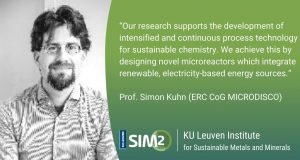A Modular Millifluidic Platform for the Synthesis of Iron Oxide Nanoparticles with Control over Dissolved Gas and Flow Configuration: https://www.mdpi.com/1996-1944/13/4/1019/htm

Abstract
Gas–liquid reactions are poorly explored in the context of nanomaterials synthesis, despite evidence of significant effects of dissolved gas on nanoparticle properties. This applies to the aqueous synthesis of iron oxide nanoparticles, where gaseous reactants can influence reaction rate, particle size and crystal structure. Conventional batch reactors offer poor control of gas–liquid mass transfer due to lack of control on the gas–liquid interface and are often unsafe when used at high pressure. This work describes the design of a modular flow platform for the water-based synthesis of iron oxide nanoparticles through the oxidative hydrolysis of Fe2+ salts, targeting magnetic hyperthermia applications. Four different reactor systems were designed through the assembly of two modular units, allowing control over the type of gas dissolved in the solution, as well as the flow pattern within the reactor (single-phase and liquid–liquid two-phase flow). The two modular units consisted of a coiled millireactor and a tube-in-tube gas–liquid contactor. The straightforward pressurization of the system allows control over the concentration of gas dissolved in the reactive solution and the ability to operate the reactor at a temperature above the solvent boiling point. The variables controlled in the flow system (temperature, flow pattern and dissolved gaseous reactants) allowed full conversion of the iron precursor to magnetite/maghemite nanocrystals in just 3 min, as compared to several hours normally employed in batch. The single-phase configuration of the flow platform allowed the synthesis of particles with sizes between 26.5 nm (in the presence of carbon monoxide) and 34 nm. On the other hand, the liquid–liquid two-phase flow reactor showed possible evidence of interfacial absorption, leading to particles with different morphology compared to their batch counterpart. When exposed to an alternating magnetic field, the particles produced by the four flow systems showed ILP (intrinsic loss parameter) values between 1.2 and 2.7 nHm2 /kg. Scale up by a factor of 5 of one of the configurations was also demonstrated. The scaled-up system led to the synthesis of nanoparticles of equivalent quality to those produced with the small-scale reactor system. The equivalence between the two systems is supported by a simple analysis of the transport phenomena in the small and large-scale setups.




